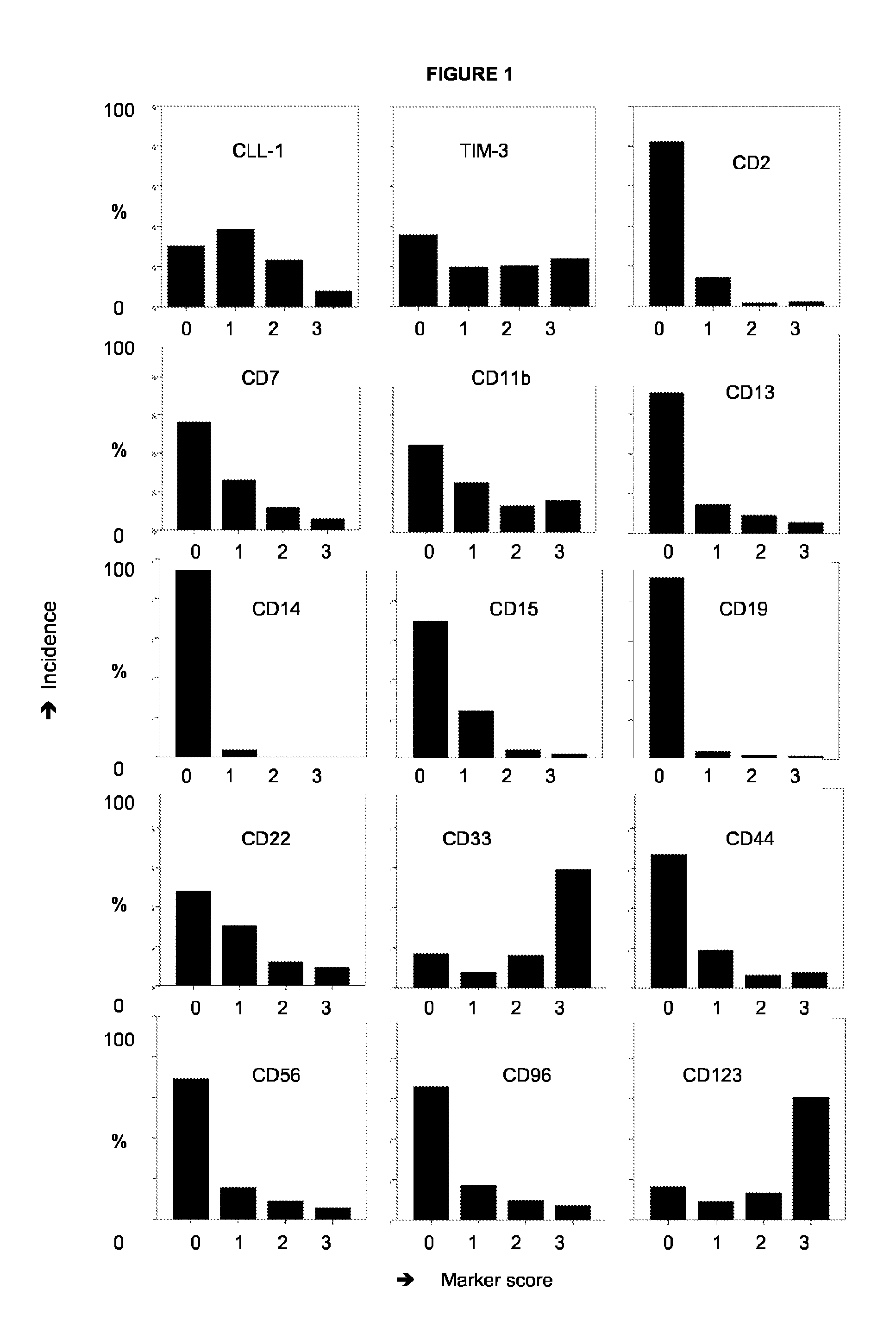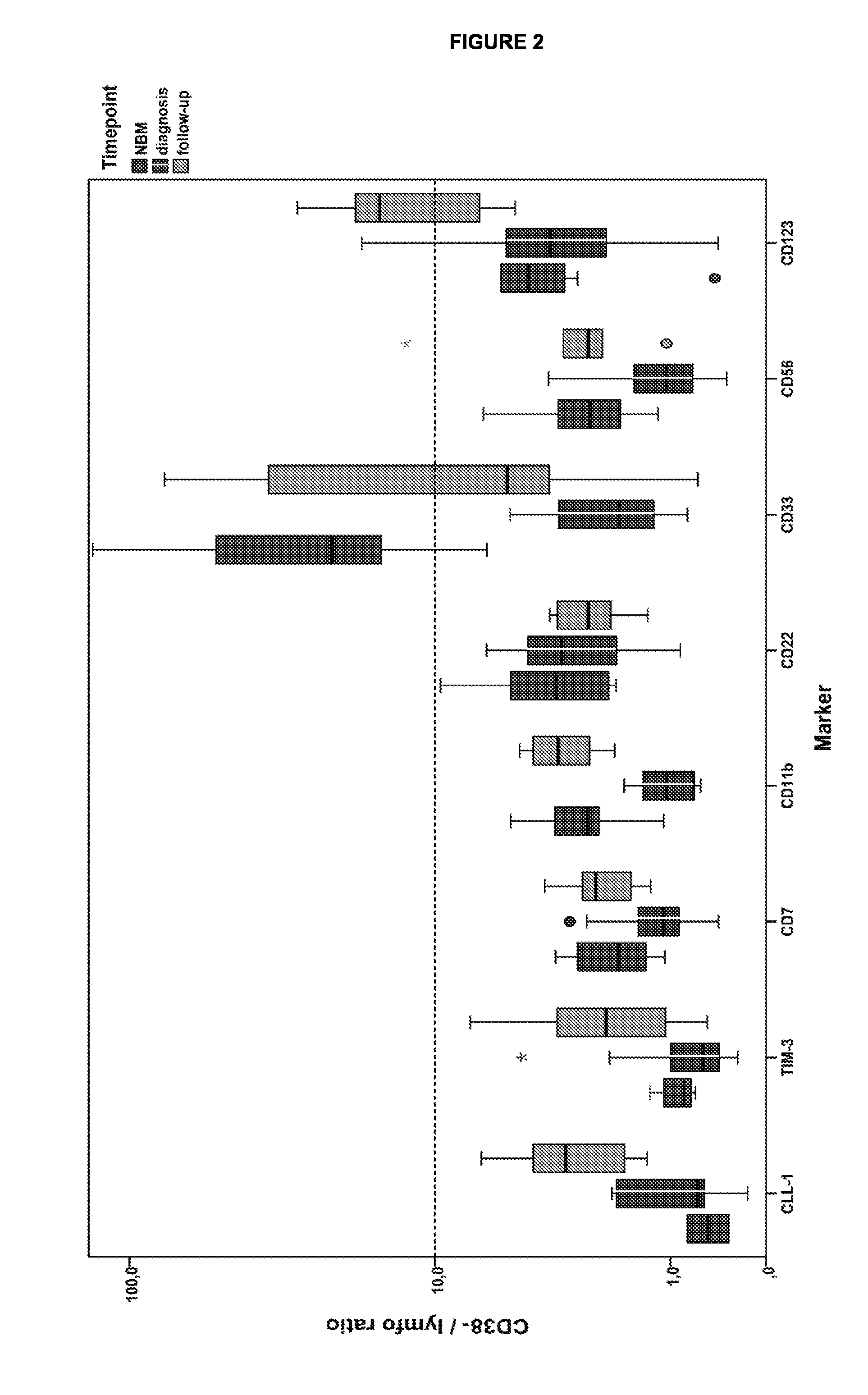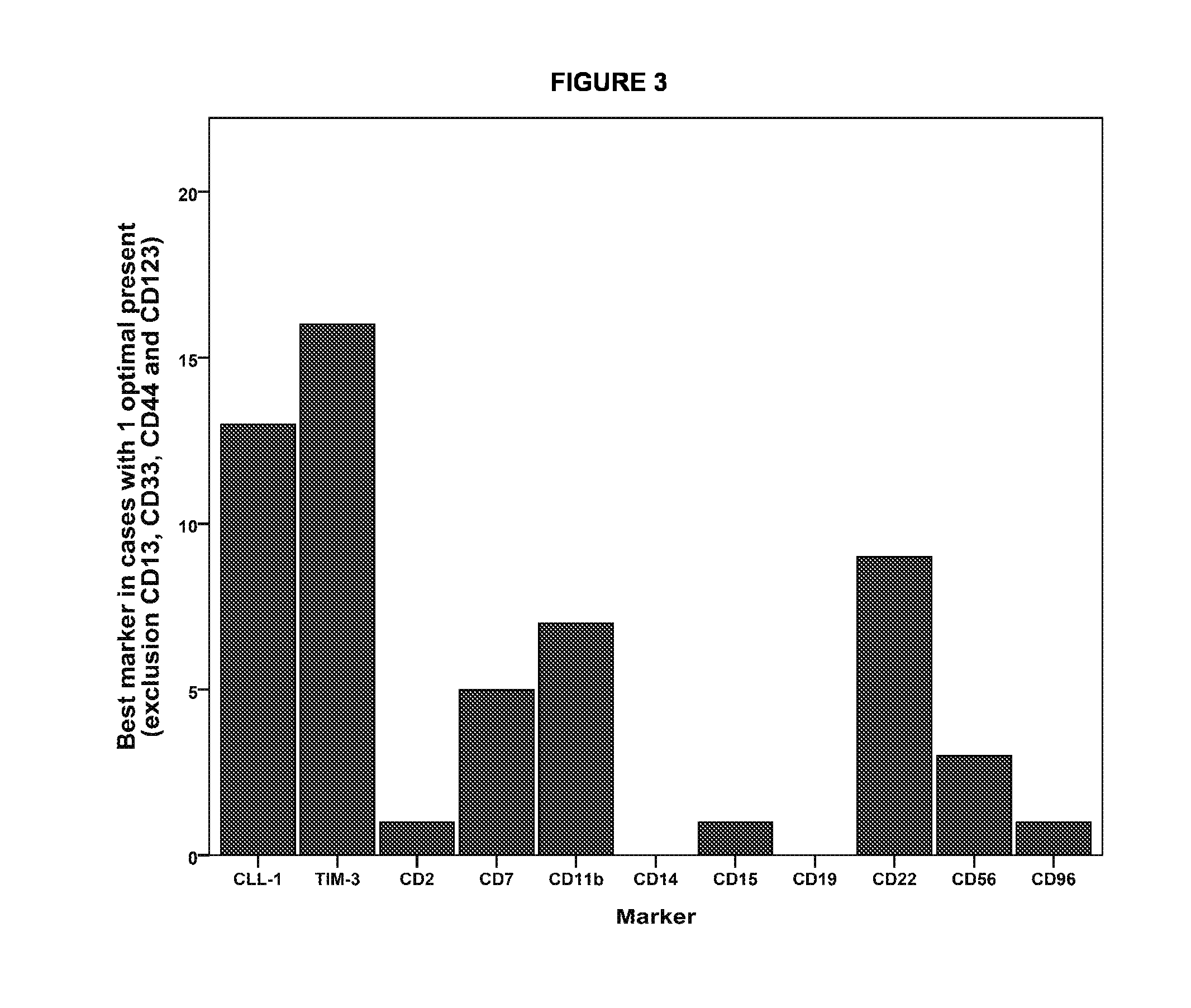Leukemic stem cell markers
a stem cell and marker technology, applied in the field of leukemic stem cell markers, can solve the problems of bone marrow, prone to bleeding, and eventually losing proper function, and achieve the effects of reducing the risk of infection
- Summary
- Abstract
- Description
- Claims
- Application Information
AI Technical Summary
Benefits of technology
Problems solved by technology
Method used
Image
Examples
example
[0053]The present inventors aimed to create a tool that detects LSCs and HSCs at diagnosis and follow up that takes into account disappearing and newly forming clones. Moreover, this tool should be broadly applicable in a multi-institutional setting, relatively cheap and less time—and bone marrow consuming compared to current detection methods. Ideally, the tool should be applicable as a single multi-parameter stem cell tube for use in FACS flow cytometry (currently up to seven tubes are necessary).
[0054]To decide which markers to use for that tube, the present inventors have established expression patterns of the following stem cell markers in 249 AML patients at diagnosis: CLL-1 (also referred to as Clec12a), TIM-3, CD2, CD7, CD11b, CD13, CD14, CD15, CD19, CD22, CD33, CD44, CD44v6, CD47, CD56, CD96 and CD123.
[0055]AML samples were considered evaluable when at least 5 stem cells were present in the CD34+CD38− compartment. This was the case in 209 / 249 cases. In 67 / 209 cases only HSC...
PUM
 Login to View More
Login to View More Abstract
Description
Claims
Application Information
 Login to View More
Login to View More - R&D
- Intellectual Property
- Life Sciences
- Materials
- Tech Scout
- Unparalleled Data Quality
- Higher Quality Content
- 60% Fewer Hallucinations
Browse by: Latest US Patents, China's latest patents, Technical Efficacy Thesaurus, Application Domain, Technology Topic, Popular Technical Reports.
© 2025 PatSnap. All rights reserved.Legal|Privacy policy|Modern Slavery Act Transparency Statement|Sitemap|About US| Contact US: help@patsnap.com



